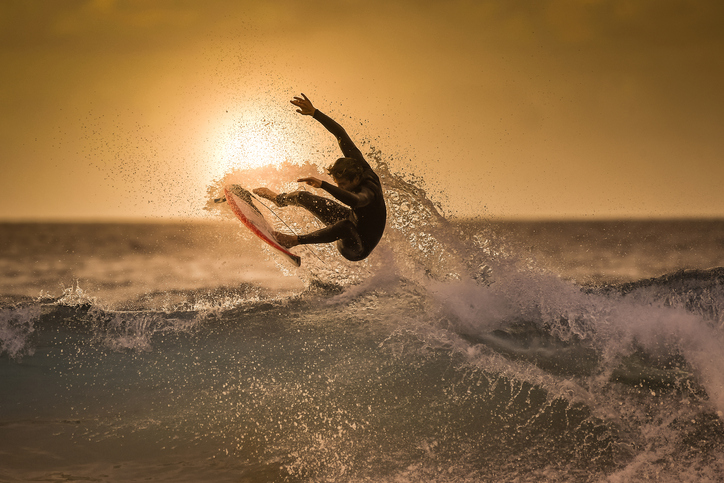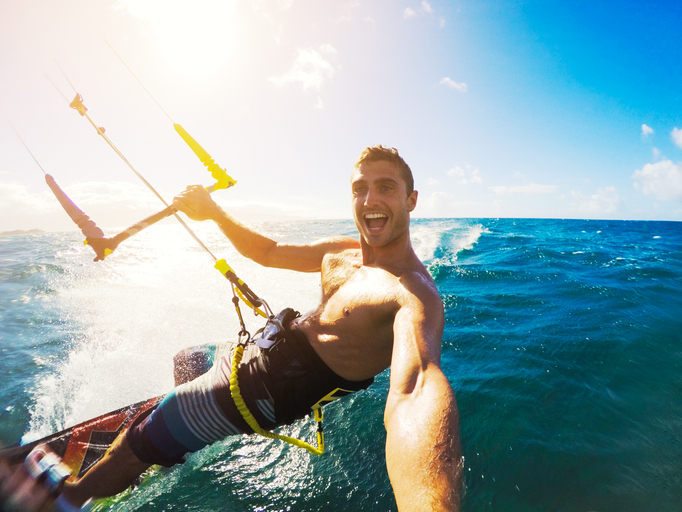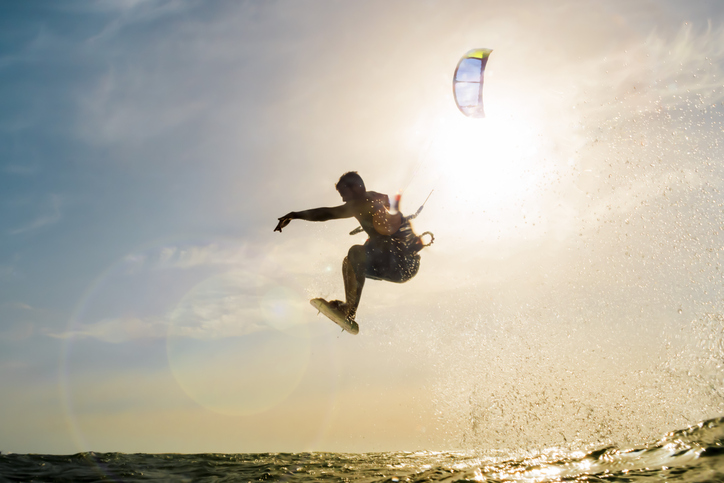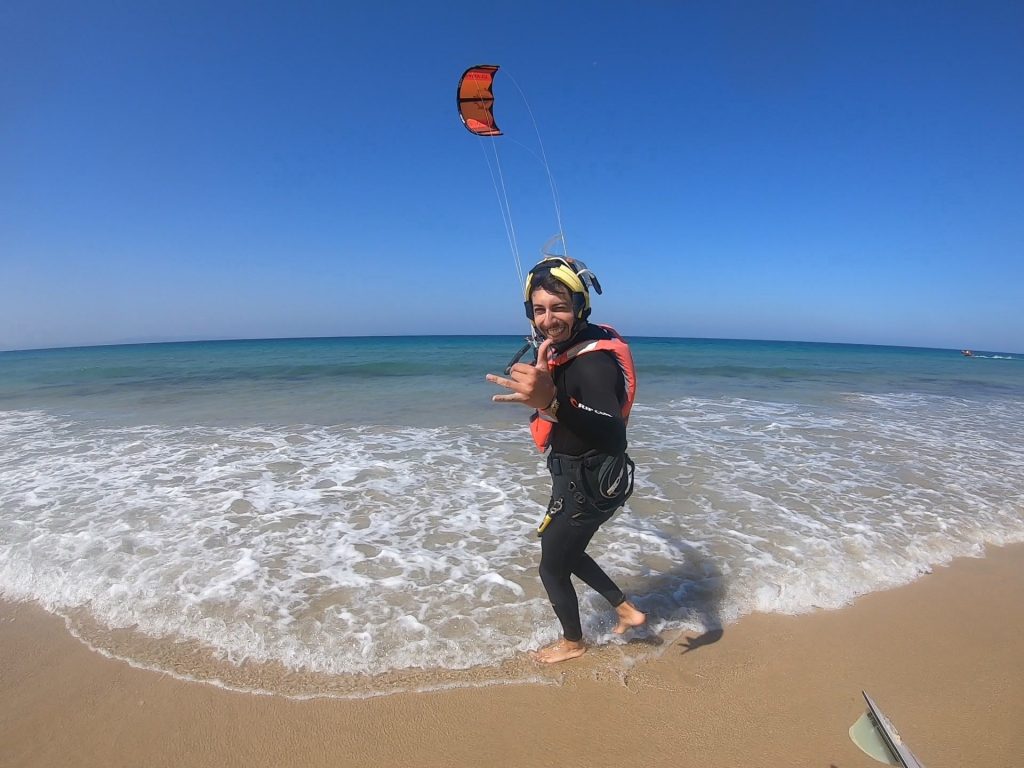Surf vs Kitesurf: Kitesurfing and surfing are two of the most popular water sports in the world, that attract thrill-seekers from all over the world. They require different skills and techniques. Both are exciting and challenging in their way, but many people wonder which one is harder. There is a common misconception that kitesurfing is harder than surfing. In this blog post, we will examine this belief and provide an objective comparison between kitesurfing and surfing. We will explore the differences between kitesurfing and surfing, the skills required for each, and ultimately try to answer the question – which one is harder: kitesurfing or surfing?


Overview of kitesurfing and surfing
Kitesurfing, also known as kiteboarding, is a water sport that involves riding a board while being pulled by a kite. The rider uses a harness and control bar to manipulate the kite and control their speed and direction. Kitesurfing requires a combination of skills, including balance, coordination, and strength.
Surfing, on the other hand, is a water sport that involves riding a board on the surface of a wave. Surfers paddle out to the waves using their arms and then use their bodies and board to maneuver on the wave. Surfing requires a combination of skills, including balance, timing, and wave knowledge.
Skills required for kitesurfing
Kitesurfing requires a range of skills, some of which are more difficult to master than others. The main skills required for kitesurfing include:
- Kite control – One of the most important skills in kitesurfing is the ability to control the kite. This requires both physical strength and mental focus. The rider must be able to control the kite’s speed and direction to maintain their balance and control.
- Board control – The rider must also be able to control the board, which requires good balance and coordination. This includes being able to maintain a stable stance on the board and adjust their weight distribution to change direction or perform tricks.
- Water start – To get going, the rider must perform a water start, which involves lying on their back in the water with the kite overhead and then using the kite’s power to pull themselves up onto the board.
- Riding upwind – To make progress against the wind and be able to come back to the same spot where they started, the rider must be able to ride upwind. This requires good technique and the ability to adjust the kite’s angle and power to maintain forward motion.
- Jumping – Finally, many kite surfers enjoy performing jumps and other tricks. This requires good timing and coordination, as well as the ability to control the kite and board while in the air.

Skills required for surfing
Surfing also requires a range of skills, some of which are more difficult to master than others. The main skills required for surfing include:
- Paddling – The first and most basic skill in surfing is paddling. Surfers must be able to paddle out to the waves using their arms, which requires good upper-body strength and endurance.
- Wave knowledge – To catch a wave, surfers must have a good understanding of the ocean and the behavior of waves. This includes reading the waves to determine the best time to paddle and knowing how to position themselves in the water.
- Pop up – Once a wave is approaching, surfers must quickly pop up onto their feet and position themselves on the board. This requires good balance and coordination.
- Riding the wave – Once on the wave, surfers must be able to maintain their balance and control their speed and direction. This requires good footwork and the ability to adjust their weight distribution on the board.
- Turning – To change direction on a wave, surfers must be able to perform turns. This requires good timing and coordination, as well as an understanding of how to use their body and board to generate speed and change direction.
Is kitesurfing harder than surfing? Common misconceptions
Upper body strength is not necessary for kitesurfing
A common misconception is that kitesurfing requires a lot of upper-body strength. While it’s true that kitesurfing involves some of that strength, it’s not a prerequisite to learning the sport. Proper kitesurfing technique involves using the power of the kite and the wind to propel the rider forward, rather than relying solely on upper body strength. Kitesurfing can be a great workout for your core and lower body, as you need to maintain your balance and use your legs to control the board.
Surfing, on the other hand, requires a lot of upper body strength to paddle through the waves and catch them. This can be challenging for beginners who may not have developed the necessary upper body strength or technique.
However, kitesurfing has a faster learning curve than surfing! We then need to switch the conversation in how fast can you progress in both sports.
Which one is faster to learn: kitesurfing or surfing?
With proper instruction and practice, beginners can learn to kitesurf in as little as a few hours. Especially with the help of a proper kiteschool like Tarifa Max Kitesurfing School, you can learn how to kite in a few easy steps.
If you’d like to know more, check our previous blog article: How long does it take to learn how to kitesurf?
In contrast, surfing requires a lot of practice to master. Beginners need to develop the strength and technique to paddle through the waves, catch them at the right time, and ride them to shore. It can take weeks, months, or even years to become a proficient surfer.
Surfing has a much slower learning curve than kitesurfing, which can make it more challenging for some individuals. Surfing requires a lot of practice, patience, and time spent in the water to master. Even basic skills like paddling, balancing on the board, and catching waves can take weeks or even months to develop.
Surfers need to look for the perfect beginner spot, like in Morocco or Portugal, as practicing in waves that are too big or break too fast might make it impossible to progress.

Kitesurfing, on the other hand, can be learned more quickly with proper instruction and practice, riders can progress rapidly and develop basic skills like riding, riding upwind, turning, jumping, and performing easy tricks in a relatively short time. Make sure to discuss your needs with your instructor, and we will adapt your kitesurfing lesson to your needs.
Surfing requires a lot of skill, timing, and experience to master. Catching the right wave and being able to ride it requires a great deal of patience, knowledge of the ocean, and understanding of wave dynamics. Even the most experienced surfers spend years perfecting their technique and learning about the ocean.
However, it’s important to note that while kitesurfing may be easier to learn initially, it still requires practice and dedication to master more advanced skills and techniques. Riders need to have good kite control, body-positioning, and be able to read wind and water conditions to be successful in the sport.
Which one is harder: kitesurfing or surfing?
Now that we have looked at the skills required for both kitesurfing and surfing, and at common misconceptions, it is clear that both sports require a combination of physical and mental skills, and the difficulty level can vary depending on factors such as wind and wave conditions, the rider’s level of experience, and personal preferences.
Surf vs Kitesurf: it’s clear that the question should instead be: which sport can I learn faster?
While surfing may have a slower learning curve than kitesurfing, both sports require practice, dedication, and a willingness to learn to master. It ultimately comes down to personal preference and what type of experience an individual is looking for.
Some may enjoy the slower pace and challenges of surfing, while others may prefer the speed and excitement of kitesurfing.


